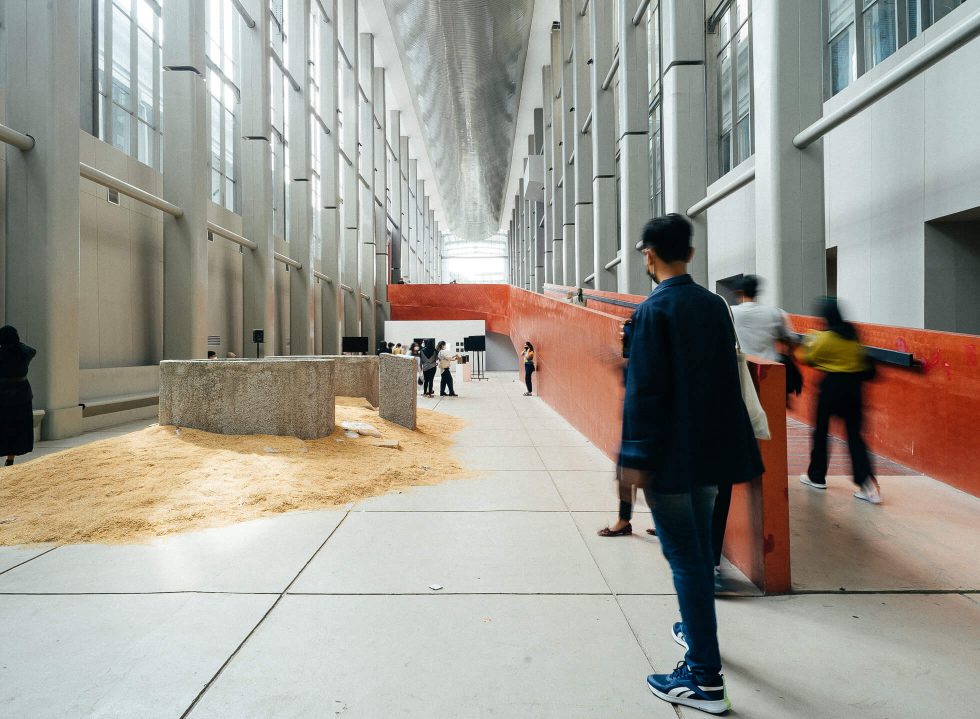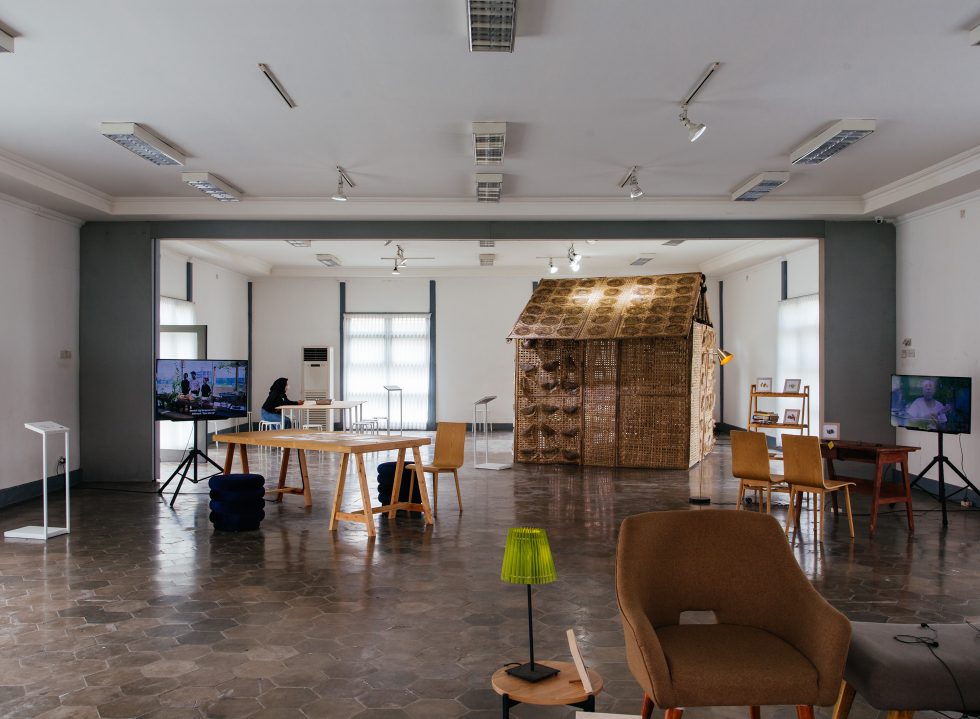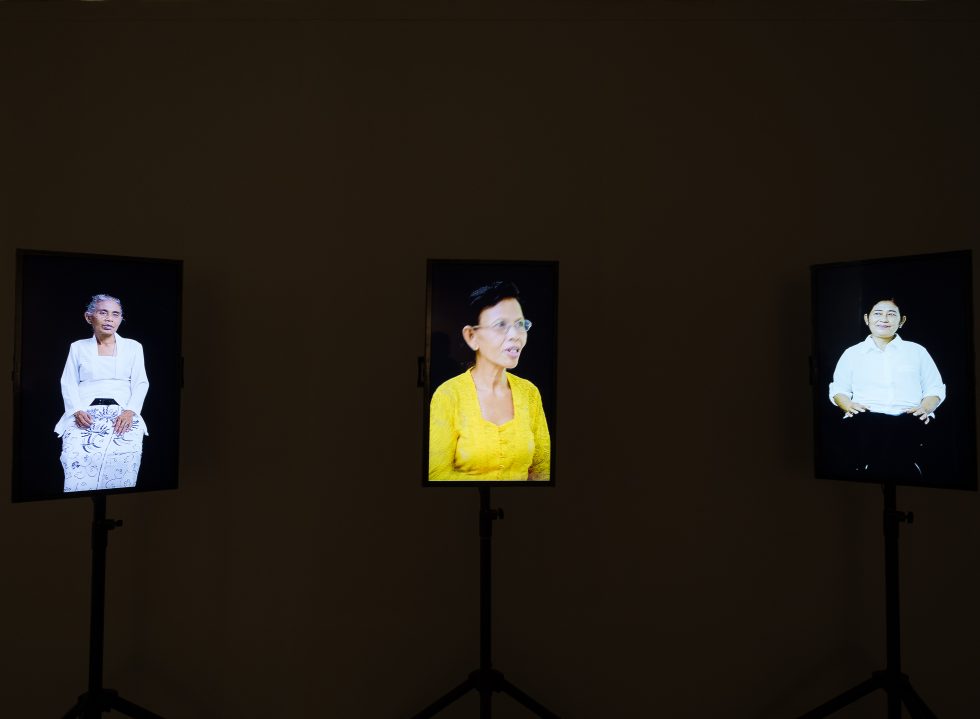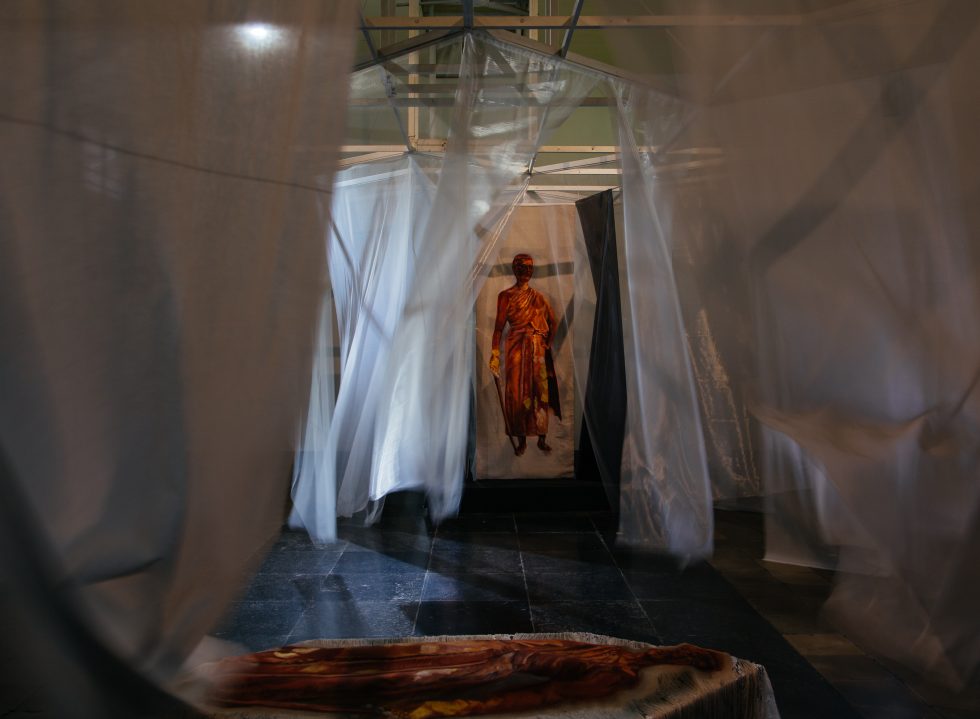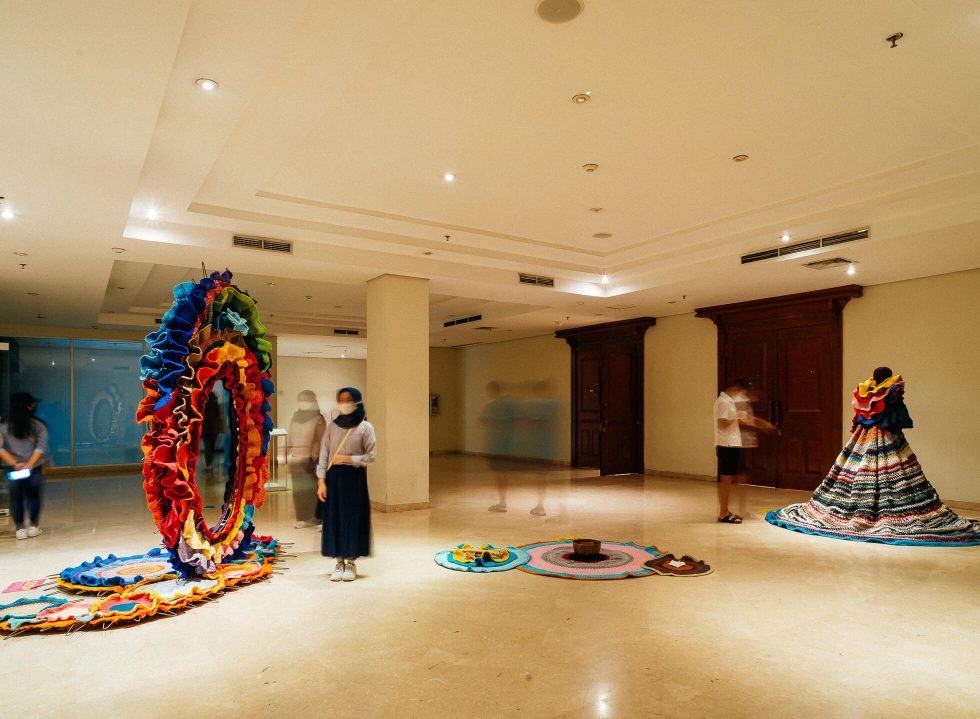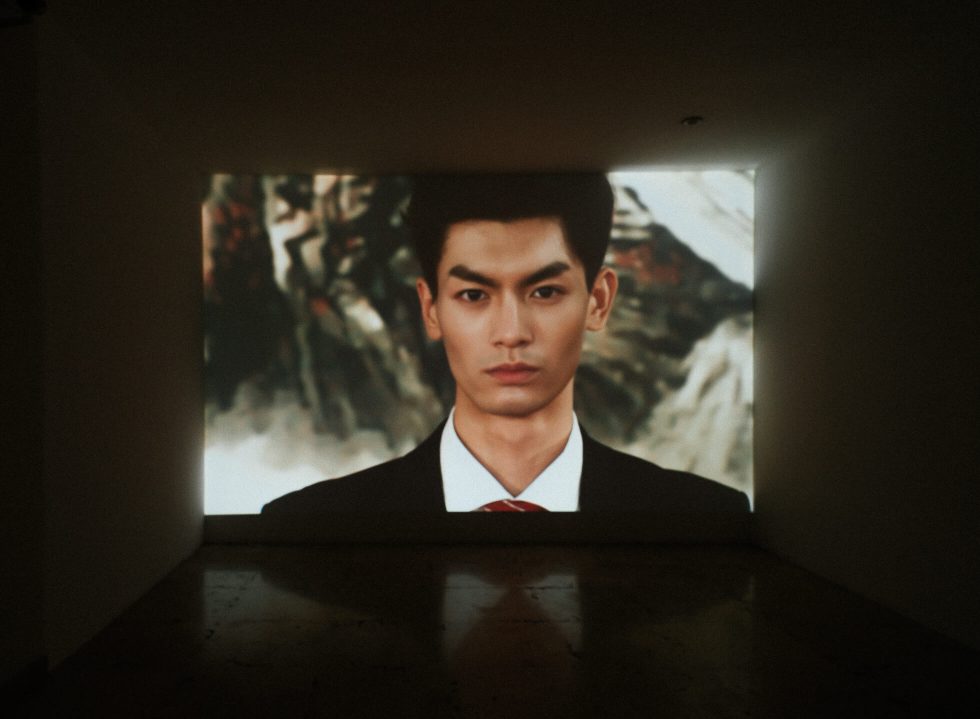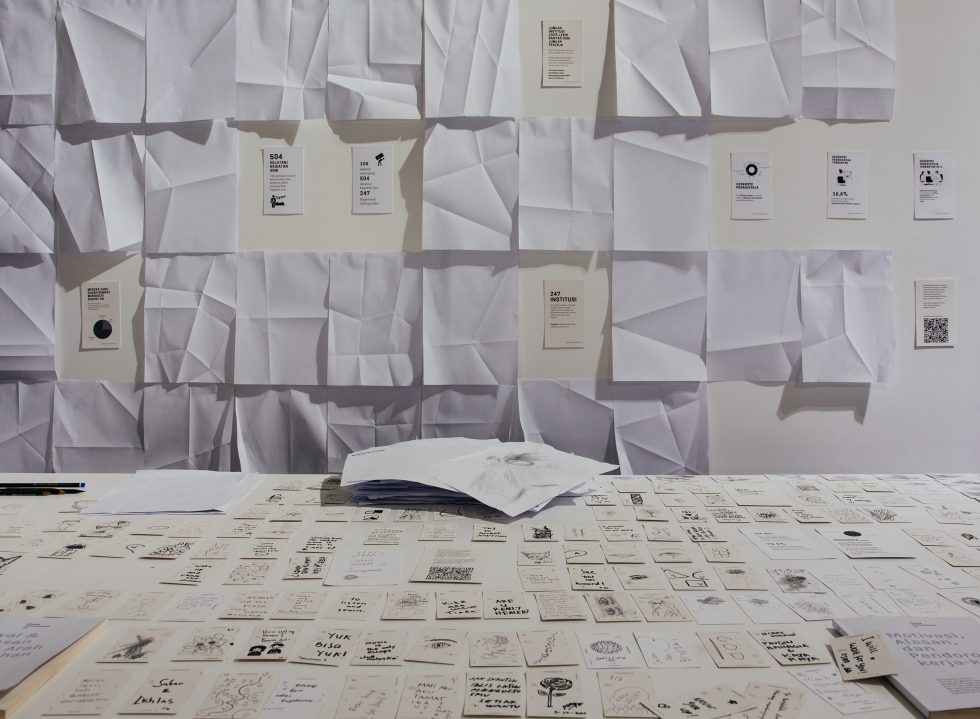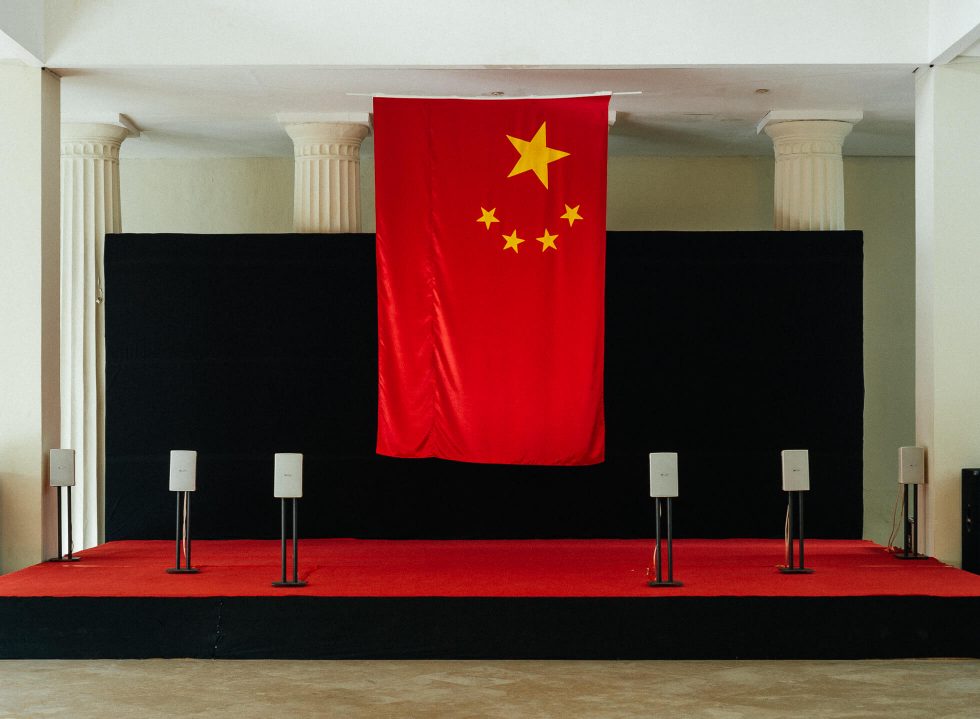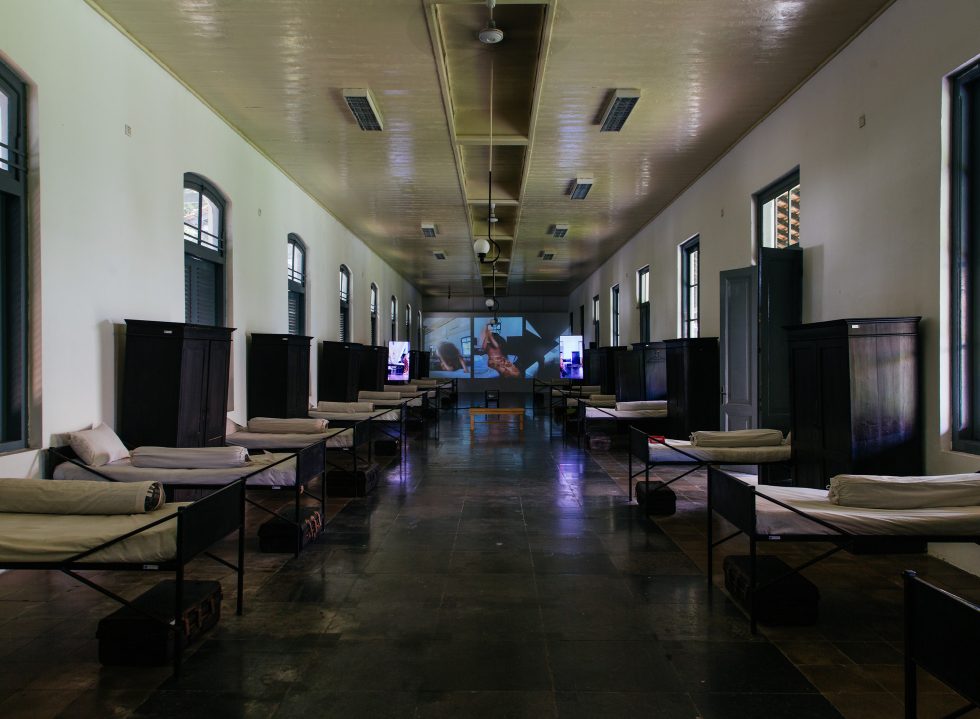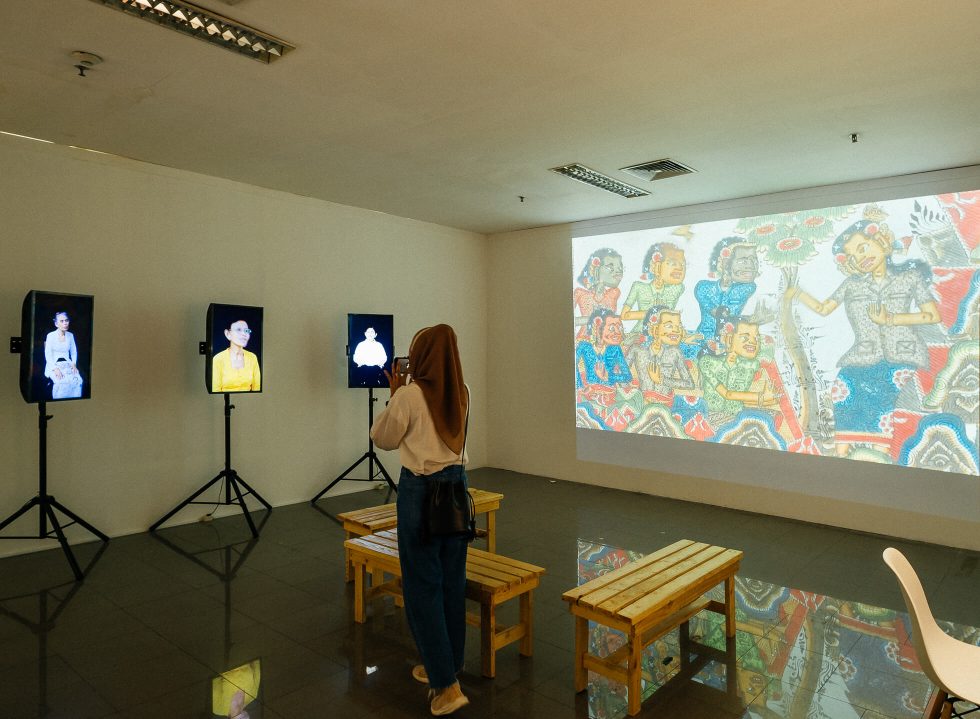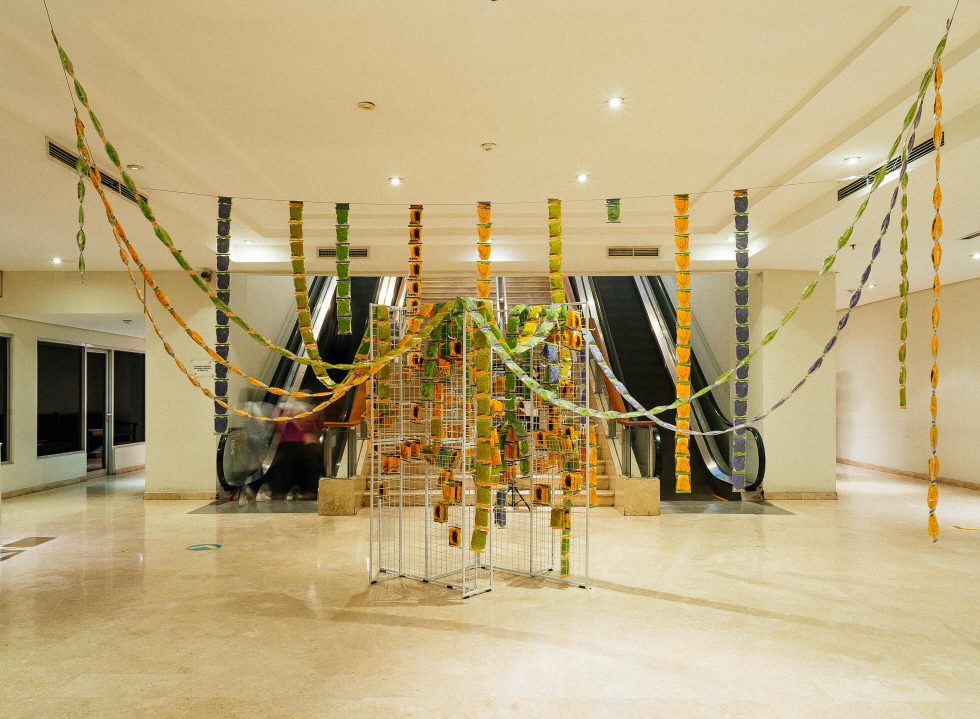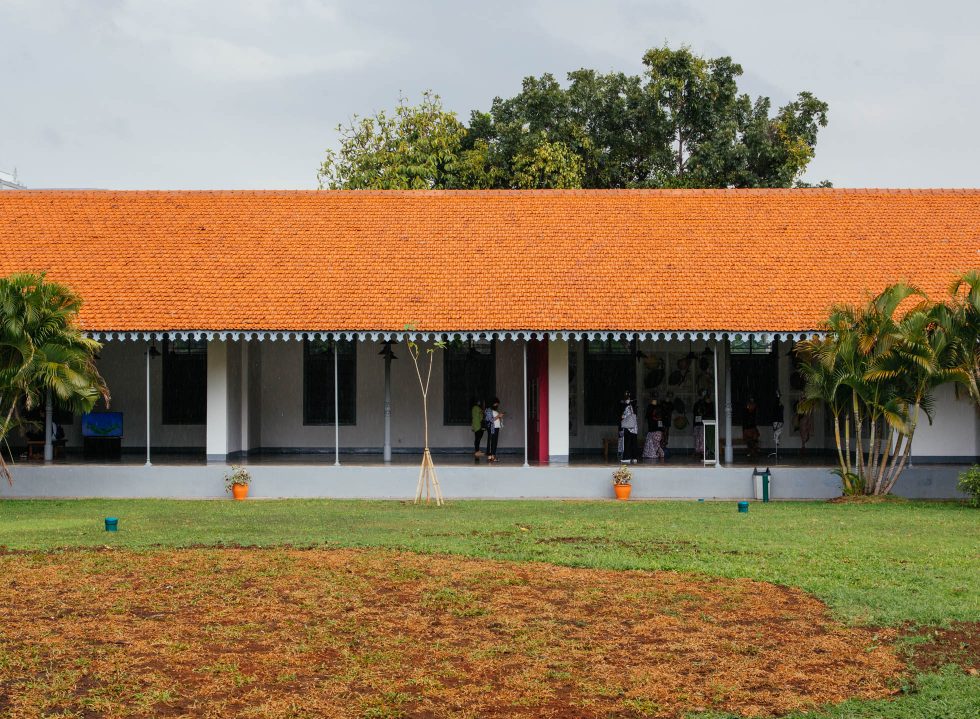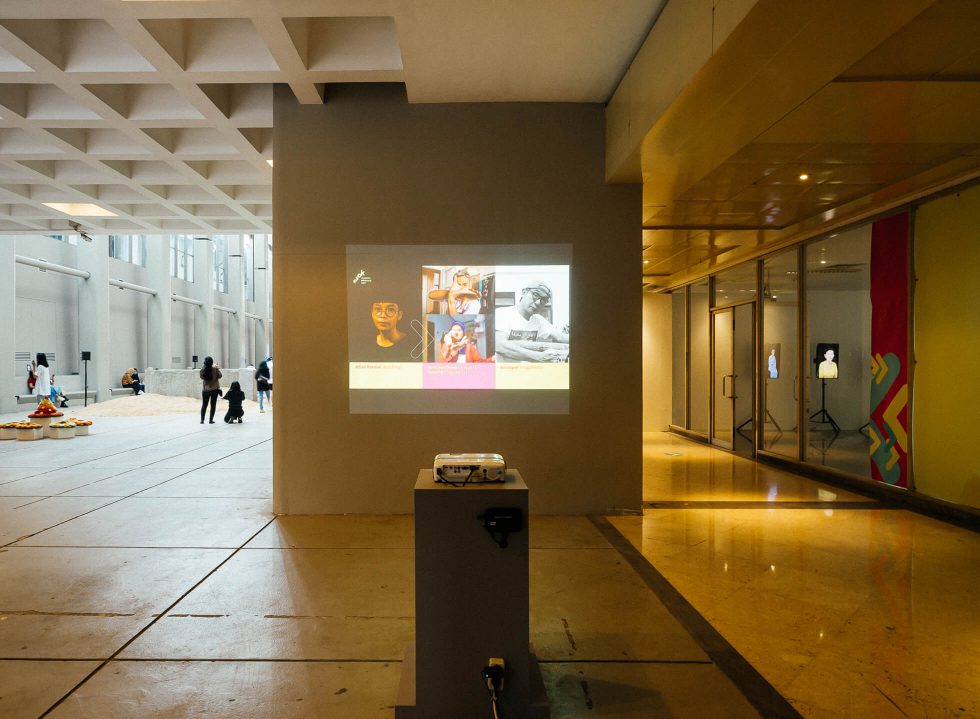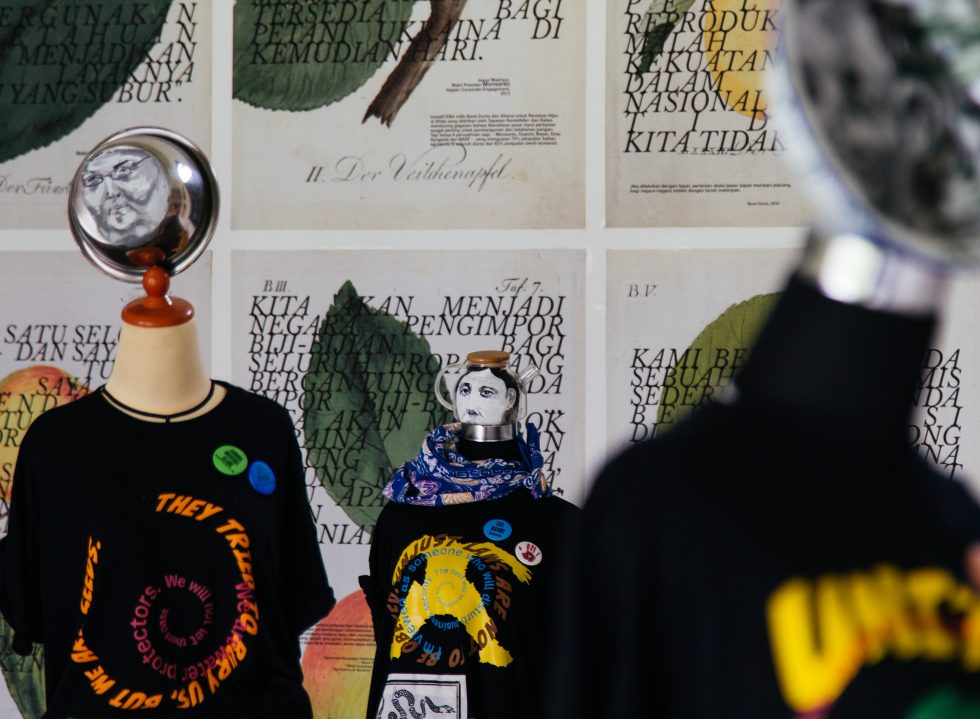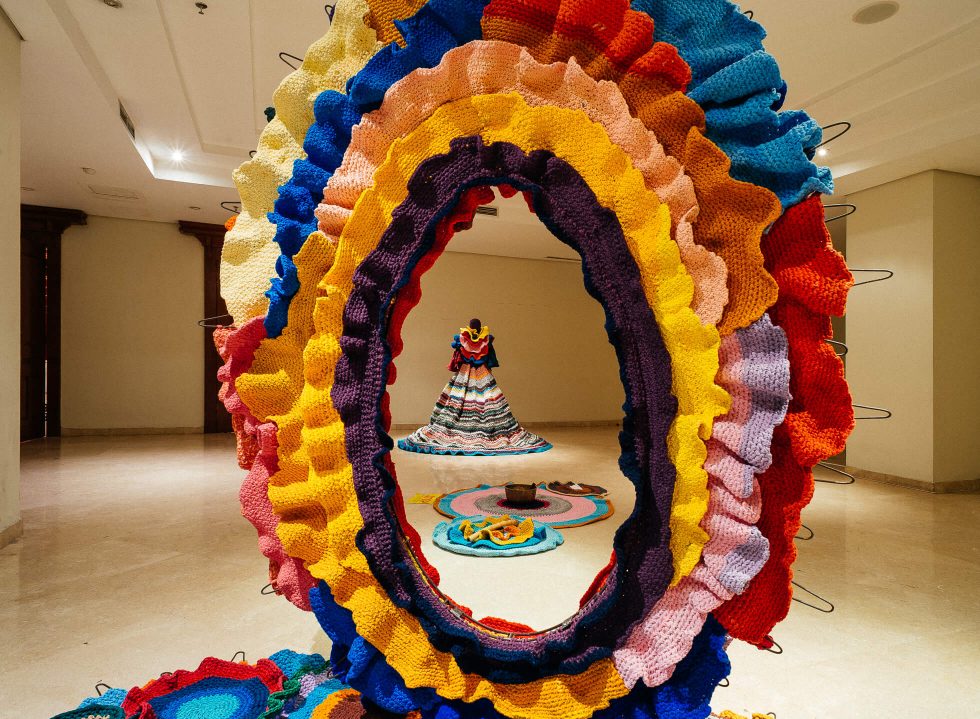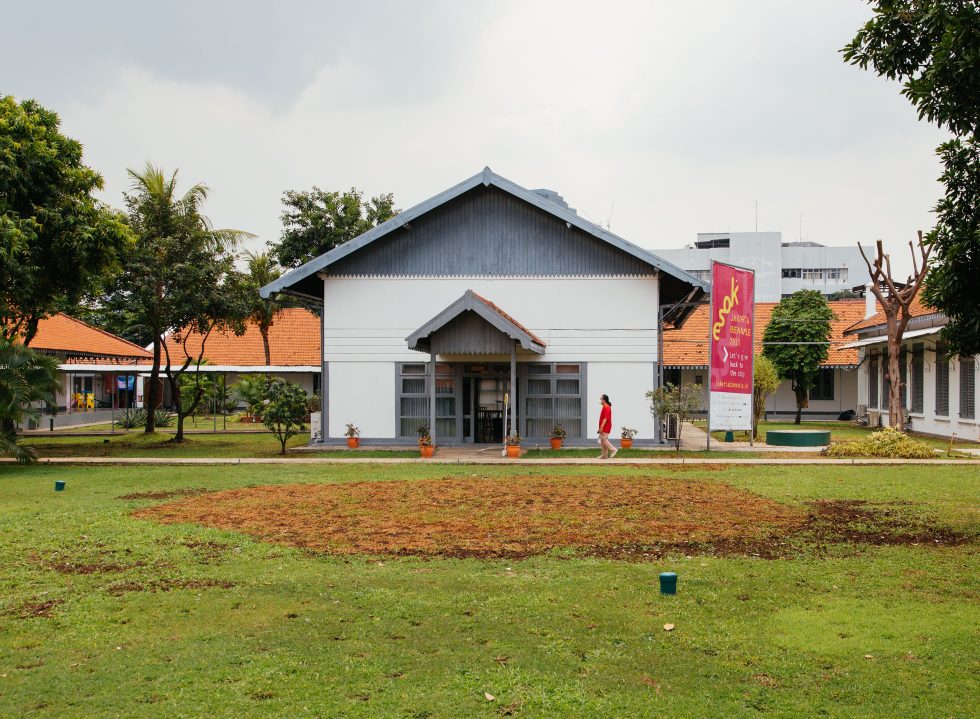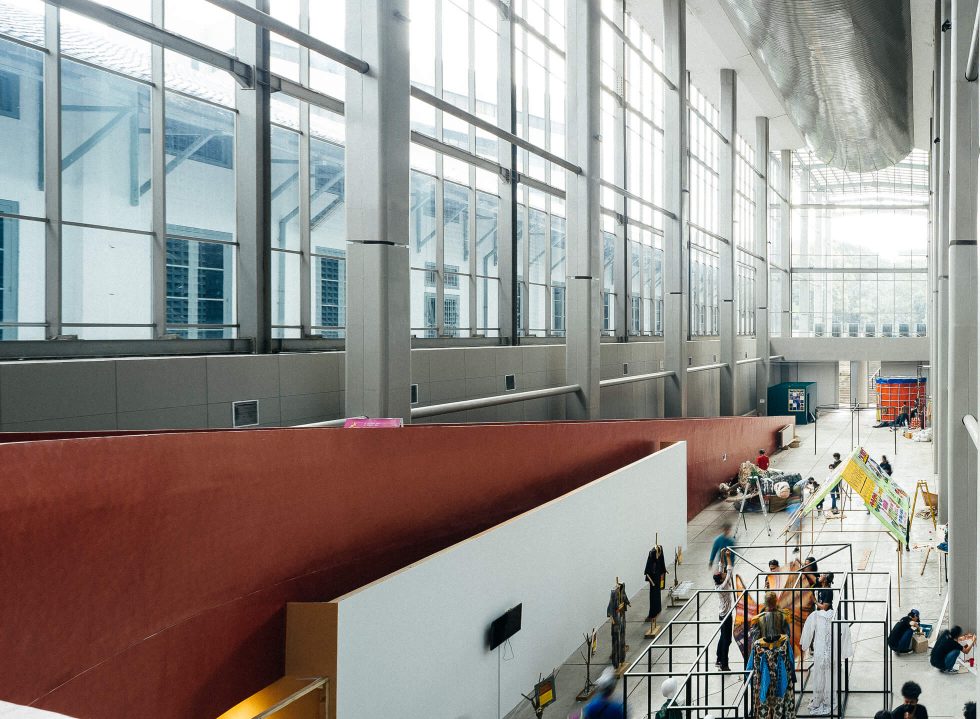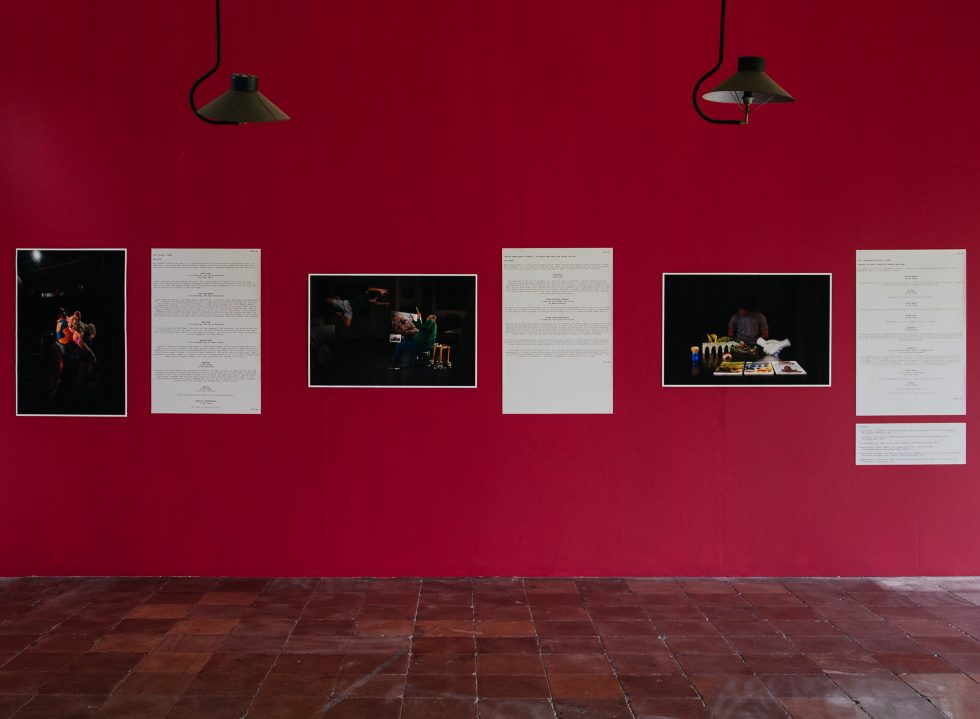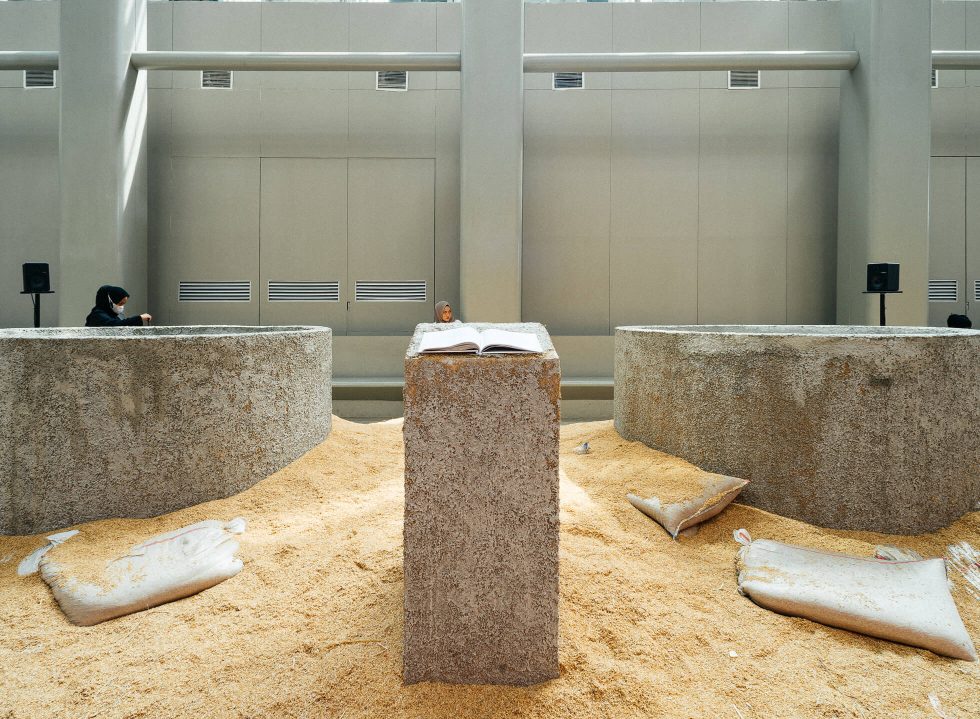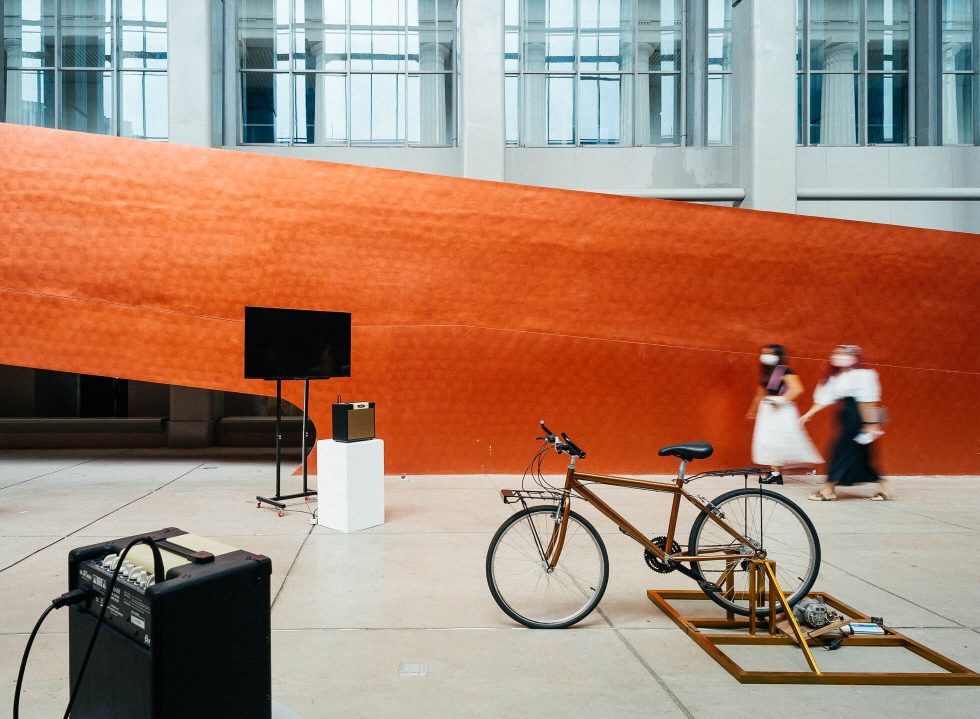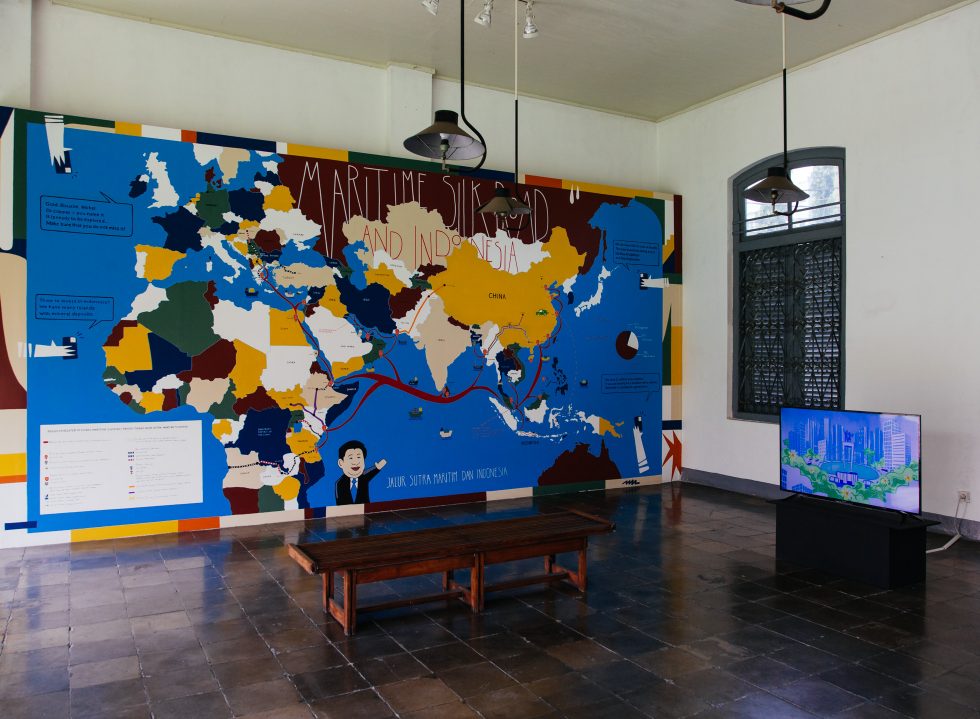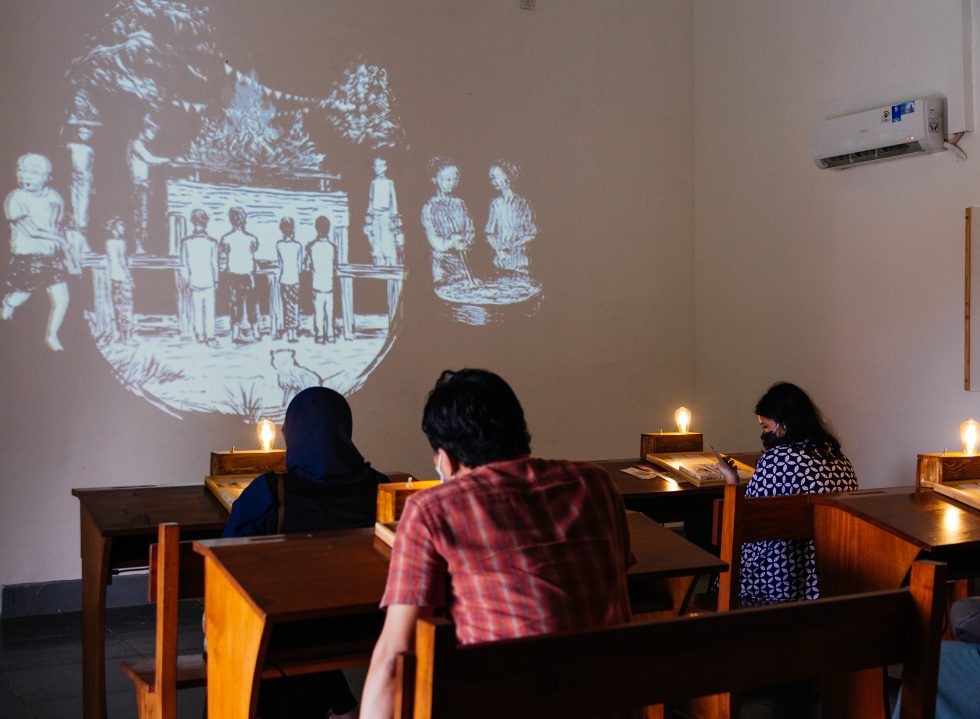Colourful posters lined up as they lead visitors to museum entryways, installations and artworks materialised in museum halls and public spaces across the capital, while committees, artists, communities, and collectives collaborated in one of the major biannual events that have once more seen the light of day. After a four-year hiatus, the Jakarta Biennale returned in 2021 with the theme ‘ESOK’. This year, sculptor and humanitarian activist Dolorosa Sinaga took part as artistic director, alongside Farah Wardani as programme director. The theme ‘ESOK’ is an ode to Jakarta, its people, and the many struggles and challenges faced collectively throughout the pandemic.
‘ESOK’ is derived from the work ‘besok’ or ‘tomorrow’, which conveys a sense of urgency and excitement in anticipation of better days. What’s interesting about this year’s biennale is that the event finally made its long-awaited debut in a time where the world and the city of Jakarta slowly spring back to life; ‘ESOK’ is a beaming ray of hope amidst troubled times, and strong encouragement to build new confidence, hope, and creativity for the future.
The Jakarta Biennale is curated by Grace Samboh, Sally Texania, and Qinyi Lim through an intensive process since 2019. Through a ‘curatorial activism’ approach, the contemporary pieces manifest across mediums, platforms, shapes and forms, and spaces both virtual and offline.
Set in different venues across the capital: National Museum, National Awakening Museum (STOVIA), Taman Menteng, and Cikini Raya, the pieces presented in ‘ESOK’ illustrate and express different subject matters–mainly pressing ones at the fore; artists and communities serve as activists and leaders of change as they raise consciousness on deep-rooted issues around human rights, climate change, cultural discourses, gender equality, the pandemic, among others.
Welcoming visitors into the courtyard of Taman Ismail Marzuki, a 20×10 metre mural art created by Beijing artist Rania Ho and a structured installation by Jakarta artist and architect Yori Antar fill up the area, as part of their effort to bring public spaces to life and engage a wider community. The mural artwork painted outside of a sports field by Rania was inspired by the many intersections of Cikunir toll road; the bold, vibrant colours, and the large, rippled and winding strokes are also considered a safe space for meditation.
While the vibrant red iron installation entitled ‘Jakarta Red Zone’ by Yori Antar poses commentary on traffic congestion, floods, and chaos interweaving in the capital, the piece is also meant to highlight the void of artistic forms in public spaces. To Yori, it is necessary for art to be an amenity, intended to be physically and freely accessible to the public and not confined behind closed doors.
The National Awakening Museum becomes a fitting venue for narratives around colonialism, one of the major themes presented throughout the exhibition. One of the first few halls visitors would enter upon entry is Maharani Mancanagara’s piece called Susur Leluri (2021). Walking into a dim-lit room to rows of typical Indonesian wooden school desks, the atmosphere is eerie but nonetheless, child-like.
Centred on the story of a mouse-deer, ‘Cikal’, the work metaphorized the mass killings of 1965-66, known as the Indonesian Communist Purge, manifested in an interactive card game and visual installation accompanied with a haunting melody. Here, visitors are encouraged to step back and contemplate alternate endings and viewpoints of the tragedy, in contrast to the singular and one-sided story that often emerges in history.
Set in a different hall of the National Awakening Museum, Vietnamese artist Xuan Ha explores the malleability of rice paper and the many forms it can hold through What Can I Write on Rice Paper? (2021). The work illustrates the impact of urbanisation and industrialisation on young people’s lives in Vietnam and the changes experienced by the said generation. Through multimedia and visual art, Xuan Ha uses rice paper sheets to write and sketch, modifying their role beyond Vietnamese cuisines.
As visitors come and go to engage with the pieces, enjoy long strolls for pleasure, or simply revel at the moment amidst the pandemic normalcy, ‘ESOK’ brings hope for the future of humanity where the world rises from its inner turmoil. The acknowledgement of issues presented in these contemporary art forms is also hoped to spark fruitful conversations and new ideas for a better future. As Dolorosa Sinaga invited, “I would like ESOK to incite the necessary changes that are built on the foundation of humaneness and humanities in order to benefit all. Let’s begin our journey towards ESOK!”
Jakarta Biennale 2021: ‘ESOK’ runs until 21 January 2022 at multiple venues across the city. More details and registration information are available on their website.
